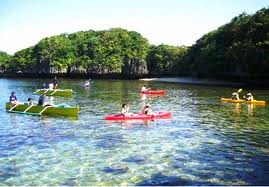That landmark etched at the back of your 20-peso bill is no other than the Malacañang Palace or the presidential palace, the seat of the government and the official home of the Philippine president. Originally the summer house of the Spanish governor general, the Malacañang (Spanish for “there’s a nobleman”) is a 150-year-old, 18th century complex built in neocolonialist style, resembling the White House of America. If you want to trace the history of the leadership that shaped the Filipinos, this place could be a good start.
White House of the Philippines
In spite the palace’s grandeur by the banks of Pasig River, history has not always been kind to Malacañang. It went through the hands of American generals William Howard Taft and Francis Harrison during the Spanish-American War. As the residence of the country’s longest-serving leaders, Ferdinand and Imelda Marcos, the palace became an icon of hatred as it was where Ferdinand declared martial law and where Imelda hid her infamous 3,000 pairs of shoes. Legend has it that Ferdinand looted Japanese general Tomoyuki Yamashita’s golden Buddha and melted it to be made as his presidential toilet bowl.
Although the palace today continues to become a magnet for protests along Mendiola Street, it continues to be an icon, well-visited by locals and tourists alike for its grand ballrooms, historic collections, and opulent rooms that every now and then have become the place for entertaining dignitaries like former US President George W. Bush.
Features
Today, the complex is divided into the main palace, the Bonifacio Hall (the former offices of former presidents Ferdinand Marcos, Corazon Aquino and Joseph Estrada), Kalayaan Hall (the former American-period executive building), Mabini Hall (administrative building), the New Executive Building (built by President Aquino), the grand staircase, and the Presidential Study, similar to that of US’ Oval Office at the White House. Across the river is the Malacañang Park, with its own garden, golf course, a recreation hall, and an American-era guesthouse.Inside Kalayaan Hall is Malacañang Museum, the heart of the complex. Built in 1920, it features exhibits and galleries showcasing the legacies of the country’s presidents. The museum’s collections are chronologically arranged, from the Spanish era (1750s-1898), to the first Philippine Republic (1860s-1901), American era (1898–1935), Commonwealth of the Philippines (1935–1946), Republic of the Philippines (1946-the present), EDSA People Power Revolution (February 1986), and several rooms used by former presidents and cabinet members.
Among the presidents’ personal collections on display are religious images, campaign posters, gifts of foreign VIPs, photographs, President Ramon Magsaysay’s riding boots, President Carlos P. Garcia’s chess set, President Gloria Macapagal-Arroyo’s necklaces, people power paraphernalia of Corazon Aquino, and mementos from Fidel V. Ramos.
















